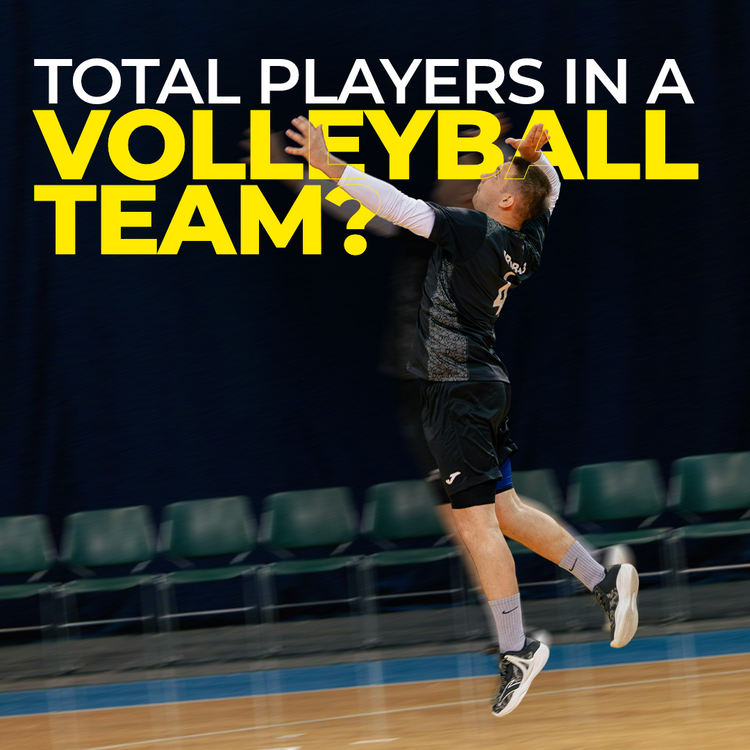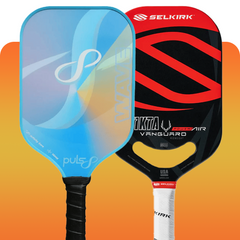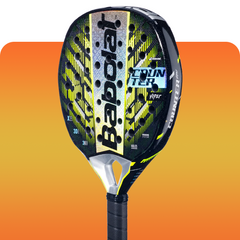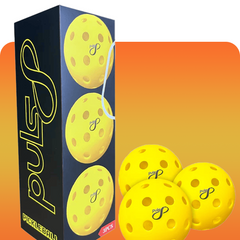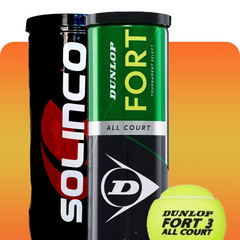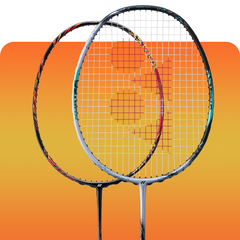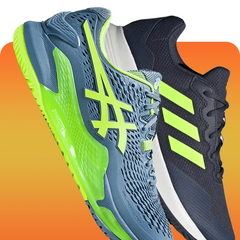Volleyball is a fast-paced, exciting sport that has taken the world by storm. Whether you're playing it on the beach or in a gym, it's a dynamic game filled with skill, teamwork, and strategy.
If you’re just starting to get into volleyball, you’ve probably asked the common question, “How many players are in a volleyball team?” It’s a basic question, but understanding the team size and roles can really help you appreciate the game better.
In this post, we’ll break down the essential elements of volleyball, from team sizes to player positions and more, so you can step onto the court with confidence!
Standard Team Size in Volleyball
When you think of a volleyball team, you might picture a crowded court, but here’s the scoop: each volleyball team has six players on the court at a time. This is the standard setup, whether you're playing indoor or competitive volleyball.
However, a full volleyball squad isn't just made up of the six players on the court. There are usually 12 to 14 players in a complete team, including substitutions, backups, and specialized roles.
One of the most unique aspects of volleyball is the libero. This player doesn’t attack or block but specializes in defense, often playing in the back row. They can switch in and out without counting as a substitution, making them an integral part of the team’s defensive strategy. This role can make volleyball’s dynamic so much more interesting!
So, to answer your question directly: how many players are there in a volleyball team? There are six on the court at a time, but overall, you’ll find that full teams typically have around 12-14 players.
Player Positions and Their Roles
Now that you know how many players are in a volleyball team, let’s take a deep dive into the specific roles of each player. Each position brings something unique to the table, and knowing their roles will help you understand how the game flows.
Here are the six key positions:
-
Setter: Often referred to as the "playmaker," the setter’s role is to set up the ball for attackers, positioning it in the best spot for them to score. They need excellent decision-making skills and impeccable timing.
-
Outside Hitter: This player is a powerhouse, often the primary attacker. They must be able to attack the ball with both power and precision while also being a solid passer and blocker.
-
Opposite Hitter: Also known as the right-side hitter, this player balances offense and defense, especially when the setter is in the back row. They need a strong attack and solid blocking skills.
-
Middle Blocker: This player’s main job is to block attacks from the opponents, especially powerful spikes. Quick reflexes and timing are essential for this role. They also contribute offensively with quick attacks off of the setter’s passes.
-
Libero: The defensive specialist! Liberos are the best at digging and passing, especially when receiving serves or defending against strong spikes. They can’t attack the ball above the net but are invaluable for their passing and receiving skills.
-
Defensive Specialist: This player comes in when there’s a need for an extra defensive presence in the back row. They aren’t limited to just one role and can help with passing, digging, or even serve-receive duties.
By understanding the roles of each player, you get a sense of how the game comes together. Every position has a distinct purpose, and when everyone works in sync, that’s when the magic happens!
Substitutions and Bench Strength
In volleyball, substitutions are crucial to the flow of the game. How many subs are allowed? Well, in most volleyball leagues, you can make a limited number of substitutions, usually six per set, depending on the rules of the competition. Substitutions allow coaches to bring in fresh players, adjust strategies, or respond to the opposing team's tactics.
The bench strength of a volleyball team plays a vital role, especially in longer tournaments or competitive matches. Having a strong roster means you can rely on backups to maintain high performance without losing momentum.
Players on the bench are always ready to jump in and make a difference, so it’s essential to build a well-rounded squad with versatile players who can step in for various positions.
Indoor vs. Beach Volleyball Teams
If you’re new to volleyball, you might be wondering whether there’s a difference in team size between indoor volleyball and beach volleyball. And yes, there is!
-
Indoor volleyball teams typically have 6 players per team, the standard set-up we've been talking about. With a bigger court and more players, indoor volleyball emphasizes strategy, teamwork, and quick decision-making.
-
Beach volleyball, on the other hand, is played with just 2 players per team. That means fewer substitutions, more individual responsibility, and a whole lot of strategy in those intense 2-on-2 showdowns. The dynamics change drastically, with each player covering more ground and being more involved in every play.
If you’re trying to decide where to start, both formats offer a unique experience. Indoor volleyball might be better for those who enjoy team-oriented gameplay, while beach volleyball is perfect for those who like a more individual challenge.
Volleyball Equipment Every Team Needs
Whether you’re hitting the sand or the court, having the right volleyball team accessories is essential for success. Here are some of the basics every team needs:
-
Team Jerseys or Kits: Your team will want to look cohesive and feel comfortable, so high-quality jerseys that allow for movement are key.
-
Match-Quality Volleyballs: These are specially designed for the rigors of official games, offering better control and durability.
-
Training Balls: Practice makes perfect, and having practice-quality balls helps develop skills.
-
Court Shoes: For indoor volleyball, invest in shoes that support lateral movement and provide traction.
-
Practice Nets and Cones: These are essential for warm-ups, drills, and improving specific skills.
When you’ve got the right gear, it’ll be easier to focus on your game instead of worrying about your equipment. If you’re looking to level up, check out our complete range of volleyball gear, crafted for players of every level!
Final Tips for Beginners
Getting started in volleyball can feel overwhelming, but with the right guidance, you can improve fast! Here are some final tips for beginners:
-
Choose the Right Gear: Pay attention to your position when picking out gear. For example, liberos often wear lightweight shoes for speed, while hitters may need more cushioning for jumps.
-
Practice Basic Rotations and Rules: Understanding how rotations work on the court will make you a better player. It’s also key to know the basic rules like how the serve works, when to substitute, and how the rally scoring system operates.
-
Join a Local Team: The best way to get started is to jump into a local club or school team. You’ll not only improve faster but also make some great friends along the way!
Conclusion
So, how many players are in a volleyball team? The standard setup is 6 players on the court, with full teams including substitutes bringing the total to 12-14 players.
Whether you're playing indoor or beach volleyball, understanding the positions and the rules can help you enjoy the game even more.
If you're ready to get started, check out our full volleyball gear collection perfect for every level of player, whether you're just starting or already spiking like a pro. Happy playing!

